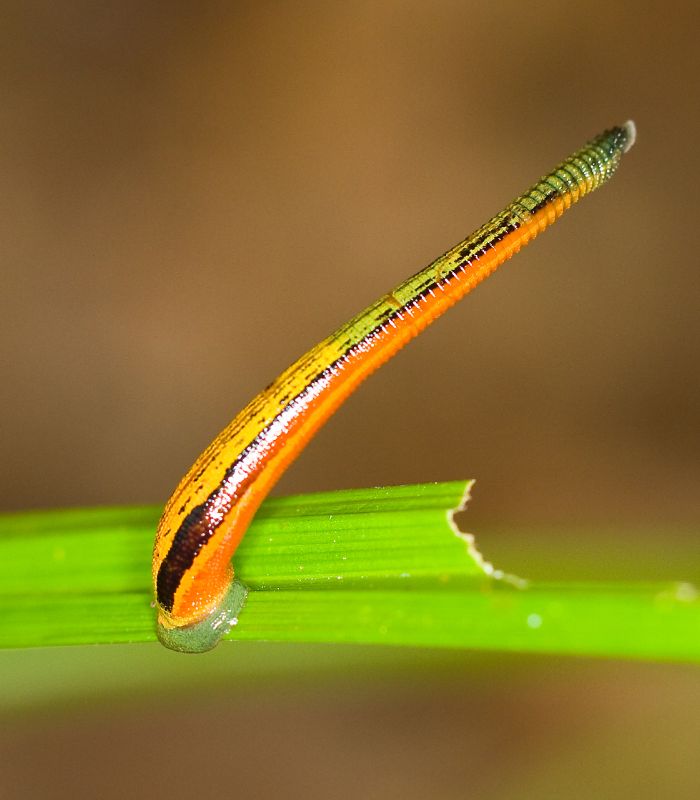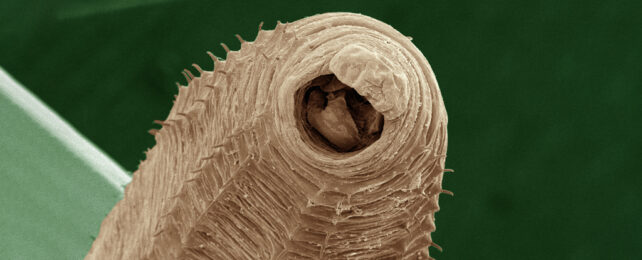Back around when worms wriggled out of saltwater and into freshwater, they experienced a cataclysmic rearrangement of their genetic material.
This event ripped once functioning genes asunder, including some of those involved in critical cell division processes, leaving earthworms, leeches, and their other clitellate relatives with the most scrambled genomes known.
"Everything broke and then rearranged completely randomly," Rosa Fernández, from Spain's Institute of Evolutionary Biology (CSIC-UPF), told Christie Wilcox at Science. "I made my team repeat the analysis a thousand times."
Three groups of researchers have now independently reached this same conclusion, upending a long held assumption that there's a certain level of genetic stability required for animal species to avoid extinction.

Evolutionary biologist Carlos Vargas-Chávez, also from CSIC-UPF, and colleagues discovered gene loss is about 25 percent higher in the line of worms that became clitellata, compared to their other relatives.
They suspect the worm's genomes scrambled in response to shifts into new habitats, but have yet to determine which came first, the worm's ventures into freshwater and land or their genes' adventures into new positions in their genetic molecules (chromosomes).
"While the timing of this genomic rearrangement remains unclear, we argue that the genomic hallmarks observed in clitellates are highly unlikely to have arisen via… rearrangements over time," the researchers explain in their paper.
Instead, the patterns Vargas-Chávez and team observed suggest a "single cellular catastrophe" that essentially shattered a worm's genome across a short time period. They suggest drastic changes in environmental conditions, including sudden exposure to more oxygen or radiation, could trigger this.
The authors liken the worms' staggering genomic changes to processes identified in cancer cells.
Most bilaterians, animals like us that have a mirror image left and right side, were thought to have highly conserved sections of chromosomes. This stability is vital for properly aligning the two strands of DNA that form them, when they're pulled apart and then paired off with one strand from each parent during reproduction.
Genomes from sponges to monkeys have these long ribbons of genes that stay together in a specific order across distantly related species, conserved for hundreds of millions of years.
These ribbons may move around to some extent, but their sequences within these sections remain relatively intact. But not in leeches and earthworms.
"Overall, the ancient bilaterian genome architecture has been completely lost within the clitellates," a second team, led by evolutionary genomicist Thomas Lewin from Taiwan's Biodiversity Research Center, found.
Lewin's team is investigating how such unexpectedly drastic changes in chromosomes have shaped animal evolution.
"Cases of genome structure conservation are exceptionally rare," Lewin and colleagues explain in another study, arguing that, in contrast to previous assumptions they are "the exception rather than the rule".
But while massive genetic reconfigurations may be more common than previously thought, they do come with risks as anticipated. A third team examined the genomes of 2,291 species across all major animal clades, finding drastic chromosomal changes can be associated with major extinction events.

"One outstanding question is how this profound genome reshaping event did not result in extinction," write Vargas-Chávez and colleagues.
They found ancestral marine worm genomes do not seem to be organized in compartments, and so are "much more floppy" than in other animals.
This "may have resulted in a high resilience to the deep genome reshaping occurring after chromosome scrambling," the team concludes. It also suggests such dramatic genetic rearrangements are likely to be ongoing in these species.
This research is available on preprint server bioRxiv, along with two related papers, and another has been published in Molecular Biology and Evolution.
